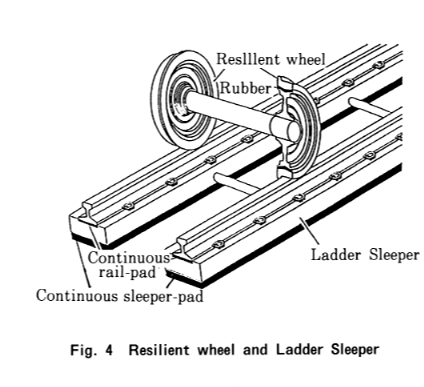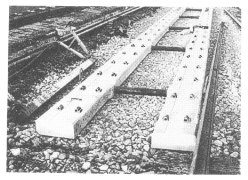
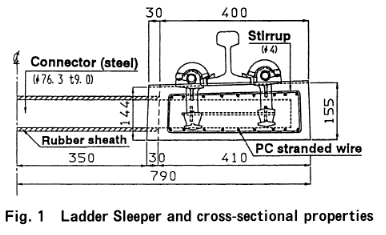
Nobuyuki MATSUMOTO
Senior Research Engineer,Structural Engineering Group,Structure Technology Development Division
Hiromi INOUE,
Senior Research Engineer,Structural Engineering Group, Structure Technology Development Division
Newly invented Ladder Sleeper, which is comprised of longitudinal PRC beams mounted on the underside of each pair of rails as well as multiple steel connectors which connect these longitudinal beams at designated spacings, is introduced.
key words: Track Structure, Longitudinal Sleeper, Ladder Sleeper, Maintenance
1. Ladder Sleeper development
The conventional concrete sleeper (crosstie) came about as a substitute for the wooden crosstie. Although it fulfills a role beyond that of a wooden Crosstie substitute on modern high-speed railways, due to its comparatively heavy weight and large rail-fastening capacity, it does have limitations in coping with issues that must be solved from the view point of the need to reduce track maintenance.
On the other hand, the longitudinal sleeper method comprised of a beam structure lengthwise along the rail superbly fulfills the function of the sleeper (ballast pressure reduction effect, etc.) and, if practical application of this were possible, the outlook would be an overall lengthening of the ballast maintenance cycle. It has, therefore, been a focus of attention among railway researchers for many years.
Based on the valuable history of challenges that have been made in developing the longitudinal sleeper method, there are two prerequisites in terms of structural design required in its actualization, as indicated in the following:


2. New track structures using Ladder Sleeper
As shown in Fig.2, when a comparison is made between the Ladder Sleeper and the crosstie (mono-block type PC, two-block type RC), it could be said that the Ladder Sleeper represents an effort to use the mono-block type in the rail direction in order to strongly enhance the sleeper function, while maintaining the tie function by incorporating the rational concept of the steel connector for the two-block type. On the other hand, in comparison to slabs (plant-type and frame-type), it could be said that the Ladder Sleeper has extremely advanced toward moving away from the plate type, which was the first type of slab, toward the utilization of the frame-type slab, for economic and environmental reasons. However, the frame-type slab is strictly a plane member and has a basically different structure compared to the Ladder Sleeper, which is comprised of mixed beam members.
Thus, the Ladder Sleeper is a next-generation rail support component that can be used universally as an alternative to both crossties and slabs. Possible applications including, five types of tracks are described in Fig.3.
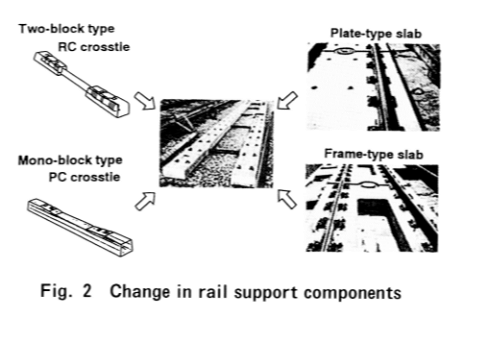
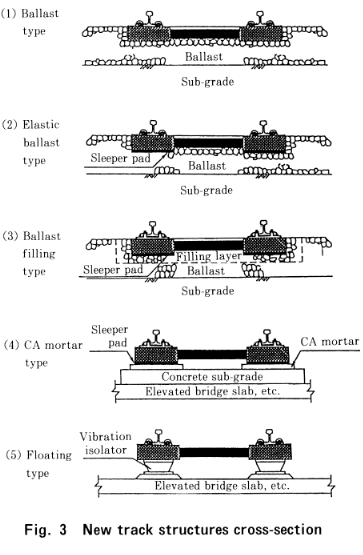
3. Conclusions
